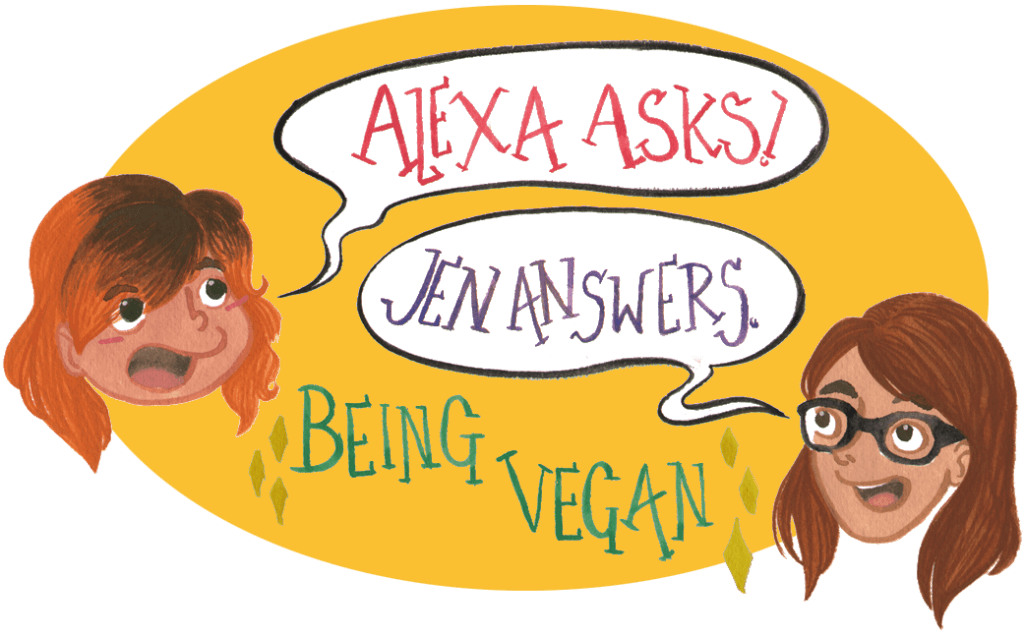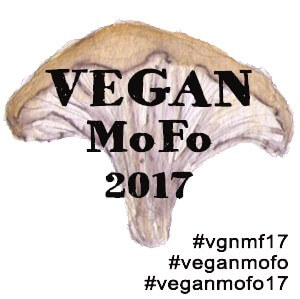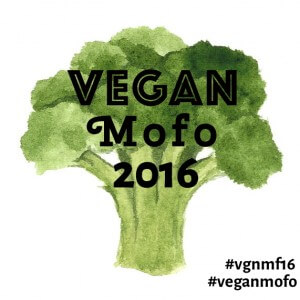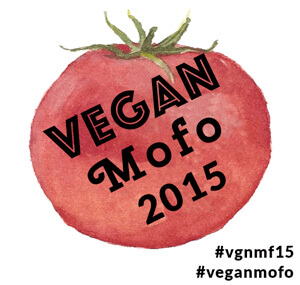Alexa is working toward a vegetarian diet, and is loaded with questions. Jennifer’s got answers. We talk about anything as long as it is vegan. Are tattoos vegan? How do I politely not eat Thanksgiving dinner? How do I order without pissing off the waitress? We know you are dying to ask!
I was recommended to eat Greek Yogurt to help with some harsh side effects of my medication, but dairy makes my tummy hurt. What are vegan options with probiotics?
Well, a fast an easy answer would be to eat vegan yogurts, but I think you deserve more options. I will go and breakdown all your options, but most might involve some personal kitchen time. You see, all those yummy probiotics in yogurt are just are a bi-product from fermentation. So I will list a few types of vegan ferments that are fairly easy to do at home.
Quick notes- if this little post really interests you I would recommend picking up The Art of Fermentation. The book is pretty much a dictionary of fermentation styles, and will go into details about practices in certain regions. For example the chapter on pickles goes into details of different type of pickling in India, Japan, mushrooms, fish, etc. The book lacks lots of specific recipes, but gives you guides, giving you lots of wiggle room with the dishes.
There is also some basics with all type of home-ferments. Some guides seem scary and long, but most just reiterate some basics. Wash hands during preparations, wash and clean everything thoroughly, make sure all soap and sanitizers are rinsed off, and all cultures are living things. Think of them like plants, you need to take care of them, and you oddly start to like them, at take photos of them when they do cool stuff.
There are also more vegan ferments, but I didn’t list them because you need to apply heat to eat them. Some example would be sour dough, tempeh, fermented grains, etc. By adding heat, the probiotics really won’t do much for you.
Vegan Yogurts
The quickest response to a vegan yogurt option is a soy yogurt. These are now pretty widely available at supermarkets, though the price tags are still pretty high. They usually have live active cultures, but tend to have lots of added sugars. You can make your own homemade vegan yogurts, but it can be tricky. You need to keep a consistent 110 temperature, which is why some people buy yogurt machines. You will also need to buy a yogurt culture, which I am never thrilled about. Modern yogurts have mediocre yogurt cultures, and will only live so many generations before having to buy more cultures. Belle+Bella have a non-dairy yogurt starter, if anyone is interested in making yogurt at home.
Don’t want to make your own yogurt? Most stores have big containers of yogurt in plain or vanilla. I recommend grabbing one of those and mixing in granola and fruit for flavor. Want greek yogurt? Take regular store bought or homemade yogurt and strain through a cheese cloth to separate more of the water from the yogurt. Voila! Your done!
Step-by-step Instructions: Waking Up Vegan
Vegan Kefir
You might of heard about this yogurt alternative- kefir. I haven’t seen any dairy-free kefirs in stores, though there are some commercial coconut milk kefirs. So you will have to make some for yourself at home. The plus is that vegan yogurts have a hard time thickening due to low protein levels (and homemade yogurts are thinner than what we are use to, thickeners added to both vegan and dairy commercial yogurt). So consistency will be more similar to the original product.
Unlike yogurt kefir is a lot less fussy. You don’t need to monitor the temperature, and naturally has a thinner disposition. The downside is that kefir grains (the culture) really enjoy cows milk, not vegan milks, so they need to replaced after awhile.
Step-by-step Instructions: Chickpeas and Change
Note: She includes how to make nut milk, you can skip these steps if you use store bought milk.
Water Kefir
Unlike making vegan kefir, water kefir is a lot more stable. Get kefir grains once and they can last a lifetime if taken care of properly. Water kefir is made from sugar, dried and fresh fruits. Most people describe it as a probiotic soda, and there lots of wiggle room for flavor since you can switch the fresh fruit around.
This seems like a pretty low maintenance sort of culture, and would recommend to anyone who wants fresh probiotics with little work. There are two steps to the brewing process, and with some planning you can get two brews rotating (as shown in the tutorial below)
Step-by-step Instructions: Bonzai Aphrodite
To Buy Cultures: Amazon
Pickles/Kimchi
This is probably the easiest probiotic you’ll make. It is also a god send when you have a garden or CSA share. Basically, you just need two things- a vegetable and salt. Vegetables naturally have bacterial cultures in them, but when you submerge them in a brine, you are creating a selective environment. All the bad bacteria are starved of oxygen, and the good bacteria flourishes.
Now, if you are thinking of jarred pickles in the store, you will be disappointed. Western culture has abandoned salted pickles and adopted vinegar pickles. But popularity is picking up again due to the cultures in salted pickles, and are available in the refridgerated sections. The downside is that prices can be steep.
The most widely available salt-pickles are kimchi and sauerkraut. They are both fairly easy to make, to a certain degree. Kimchi traditionally is an all day affair, but that is usually because traditionally you make enough kimchi for the year. No fucking joke. But there are plenty of recipes out there for vegan kimchi that is super simple and only uses one head of cabbage. Sauerkraut is another simple and traditional salted pickle, but you can use ANYTHING. Carrots? Sure. Beets? Why not? Green Beans? Are you listening to me? Anything can be used.
Best thing? No added cultures needed. There are some you can buy, and I think they are the BIGGEST waste of time. They don’t increase fermentation speeds, nor do they make it “safer” to make the culture. Below is just a list of pickles to show how diverse your options are, but the skys the limit.
Traditional Kimchi (using traditional methods): Beyond Kimchi
Traditional Kimchi (the lazy method): The Simple Veganista
White Kimchi (not spicy): Crazy Korean Cooking
Kolhrabi Kimchi: One Raw Bite
Pickled Mango: Indian Kitchen
Sauerkraut: Nourished Kitchen
Fermented Salsa: Bonzai Aphrodite
Miso Pickled Cucumber: Splendid Table
Kali’s Death Sauce: One Raw Bite
Kombucha
Kombucha is the newest wonder drink. It is similar to soda, but usually have a sour flavor to it, but with hints of tea. The best thing about kombucha is that since it is so popular there are lots smoothies, drinks, and cocktails that use kombucha, giving you lots of options.
This drink is really trendy but pretty darn expensive. The reason is probably why most fermented foods are expensive- refrigeration and glass jars make shipping a pain. You can make kombucha at home with just a jar of store bought kombucha, but I wouldn’t recommend it. In the past I tried making a mother culture from just one kombucha drink, and I constantly had bacteria infect the culture. Having a strong mother (or SCOBY) you are pretty much set for life. I bought mine from a local co-op, or you might be able to get one from a friend. But otherwise, it is worth shelling out the cash for a healthy culture. Honestly. I thought it was a bunch of marketing crap to try a get you to spend money, but most store bought drinks don’t have a culture diverse enough to last after few brews.
Step-by-step Instructions: Pickles n Honey
Miso
I think we all know about miso, right? It is a vegan staple add that little bit of umami. A lot of recipes that use miso will say to mix miso in as the last step to create the least amount of damage to the bacterial cultures. I find the best ways to include the live active cultures of miso is making dressing out of it. Toss them in a salad, over cooked veggies, or mix into a wrap. You can also make daily miso soups for breakfast, which I think is really tasty. Just make sure when you go shopping for miso that it is the refrigerated section and doesn’t have MSG, dyes or preservatives listed in the ingredients.
Making Miso at home is pretty complicated. It involves keeping a consistent temperature for long period of time. Unlike natto or yogurt, you only need to keep a specific temperature for a few hours. There are lots of steps, so I am a little hesitant to leave a link to a “make your own miso” website. But if you want to get serious about it, I would recommend buy The Book of Miso, which seems be a classic for all this miso related. If you have patience, then you can make miso.
Step-by-step Instructions: Fermenters Club
Natto
Natto isn’t a common fermented food for vegans, or really anyone outside of Japan. They have an interesting smell and a unique texture. They seem fine and innocent when looking at them. Just beans covered in a sauce, right? But the second you scoop them up long strings show up, like melted cheese. Just like miso and yogurt, making natto at home requires a constant temperature. But it seems that this super traditional Japanese food is open for lots of interpretations, including using alternative beans. If you want to give natto a try, most westerners can buy them frozen at an Asian food market. Sadly they use styrofoam, and the freezing kills most of the culture. But it is way to see or acquire a taste for it before diving into buying a culture. I personally like mixing them with some BBQ sauce over some white rice. Yum.
Step-by-step Instructions: Natto King
Buy Spores: Cultures for Health
Gochujang
To benefit from the bacteria in gochujang you either need to buy from a small artisan seller or make it yourself. Most commercial gochujang has lots of preservatives and coloring in it. Unlike miso or natto, you can just simply shove this sucker out in the sun to ferment rather than carefully monitor the temperature. This is mostly because the recipe I found online uses a pre-fermented bean powder, cutting out some of the hard work. Although traditionally gochujang is used in hot dishes, you can use it raw, or stir it in at the end of recipes, similarly to miso.
Step-by-step Instructions: Maangchi
More Information: One Raw Bite
Raw Fruits & Veggies
Lots of foods have live active cultures naturally in them. By eating raw fruits and veggies you are automatically getting some live cultures in your tummy. This also extends to foods you might think about, including raw overnight oatmeals. There are lots of grains and beans that have some cultures in it, for example you can easily ferment almost any grain by letting it sit in water for a few hours. This helps break down the food before you cook it. But, you will most likely cook the food before consuming. Look up a few raw food websites and you can start consuming probiotics with no fermentation.
Home Brews
Wait- booze has probiotics?! Yes, a lot of healthful qualities of alcoholic beverages tend to be ignored. In fact some of the other drinks and foods listed have potential to be come boozy. Basically the difference between a wine and pickles are sugars. Yes, sugars are what get converted to alcohol.
Now suggesting you drink beer and wine to help out your tummy isn’t the best advice. I would recommend keeping it down to a drink a night, and you should be drinking home brews. Most beers and wines are pasteurized to stop the yeast fermentation, creating a shelf stable product.
But making your own hooch can be fun, and will have live cultures in them. The easiest thing you can do is a mead (not really vegan) or a fruit wine. Wine and mead is pretty easy, just juice and let sit for a few days. If the honey and juice is raw then the yeast should start going to work. Beer on the other hand is pretty complicated. If you want to take a dip in beer brewing I would recommend buying a kit.
Hard liquors have NO live active cultures ever. So moonshine won’t help you out.
Fruit Wine: Offbeat Home
Beer Brewing: Brookyn Brew Kits
Kvass
This drink is growing in popularity but is still under the “hip” radar. Kvass is a Russian drink traditionally made out of stale bread. This drink has a low alcohol percentage, about 1% or less, which is probably why it is taking over the health world. Kvass can taste very different, ranging from the simple “bread” original, or different fruit versions. The drink is pretty easy to make, and can use up any old breads. It takes a total of 3 days to make, so it is fairly fast compared to some other brews on the page.
Step-by-step Instruction: Natasha’s Kitchen
Home Made Sodas
Pretty much any liquid can be fizzy and full of live active cultures. You don’t need any special machines either. No, all you need is a starter culture. Some people use whey, but that wouldn’t be vegan. You can use pretty much anything as a starter, yeast, kefir, kombucha, pickle juice, whatever. If you like experimenting, you probably would like making homemade sodas.
It is pretty hard to find any instructions online about making homemade sodas. That is mostly because people are using more and more of syrups and carbonating machines to get homemade fizz. But you can experiment by finding homemade virgin cocktails and adding a culture to it. Below is a link to Alton Brown’s homemade ginger ale. In the recipe he uses dry active yeast. I used to make this recipe for my husband when he had to commute via train. This helped keep his tummy calm due to the ginger. The recipe is great because it gives you to key to the fizz, which is basically letting the drink ferment with a sealed bottle.
Step-by-step Instructions: Good Eats: Ginger Ale
Rejuvelac
I’m hesitant to share this recipe since I am not sure if it would even taste good. Pretty much rejuvelac is an invention from the raw food movement, a grain sprout water drink. Mmmmm… sounds yummy right? But who am I to judge, I love moldy tea. I am sure that falls under the category of weird. Basically this drink is made from grains such as quinoa, millet, wheat berries, barley, etc. First you sprout the grain, then let the sprouts soak in water. Descriptions vary on flavor, depending on the grain of choice. This is a great “starter” for a soda or nut cheeses as well, if the taste isn’t 100% your thing.
Step-by-step Instructions: Rawmazing
Vinegars
Betcha never knew vinegar was made by bacteria! Well, it should make sense if you brew beer or wines, there is a constant warning that keeping your brew for too long will result in a vinegar. Vinegars can be easy or hard to make, depending on what you make of it. The art of vinegar making is coming back in fashion, partly because of revival of shrubs and vinegars in cocktails and partly because of the new hipster drink in Brooklyn- Switchel. Making vinegar is pretty easy and you might have done it by accident with a bottle of wine. But there are special tricks to making GOOD tasting vinegar.
But what if you are lazy? That’s okay. There are some vinegars that are cheap and have live active cultures. For example Bragg’s Apple Cider Vinegar have live active cultures and can be bought in pretty much any supermarket. You can easily make a drink with 2 tablespoons vinegar, 10 ounces water or iced tea, and some sweetener of choice. Switchel is pretty much the same thing only with maple syrup and ginger as well. There are other cool vinegars reaching the market of live active artisan vinegars such as McClary Bros Vinegars, and Sweet Honey Farmacy.
Switchel Recipe: The Kitchn
Sub-Lime Mate Tonic: One Raw Bite
Step-by-step Instructions: Vinegar Connoisseurs International
Vegan Cheeses
If you want some vegan cheese, fermented nut cheeses are the way to go. Buzzfeed had a video where everyone tried various vegan cheeses, and the favorites were the artisan nut cheeses. They are similar to normal cheeses since they use bacteria to create flavor. What makes nut cheese kind-of fun is that you can use many different cultures. Unlike yogurt or kombucha, the importance is not on sustainable cultures that will last generation after generation. Instead it is more important to pick certain types of culture for flavor. Think about regular cheese, the difference between cheddar and blue cheese is largely based on the bacterias used to cure the cheese.
So what are the best cultures? Some people suggest rejuvalac, soy yogurt, kefir cultures, pro-biotic pills, and even cultures from pickles. Pretty much you are free to use ANYTHING with a live active culture. Pretty crazy right? There is a lot of openness for playing around with a recipe. Some people like putting on herb and spice rubs, or add some extra goodies like miso and nutritional yeast. You can even choose certain nuts and seeds, which can be expensive (cashews and brazil nuts) or cheap (sunflower seeds and pumpkin seeds). Below are some recipes that you can start with to give a little confidence about where to start.
Yogurt Starter: Fermented Vegan Cheese
Rejuvalac Starter: Rawmazing
Probiotic Capsule Starter: Lexie’s Kitchen
By ALL means this is not a complete list of vegan pro-biotics
Some probiotics I left out because it just seemed pointless to mention. Soy sauce- is just soy beans so fermented they loose their structural integrity. And I assume no one wants to make their own. Possibilities are endless of what you can ferment, and once you start it is hard to stop.















